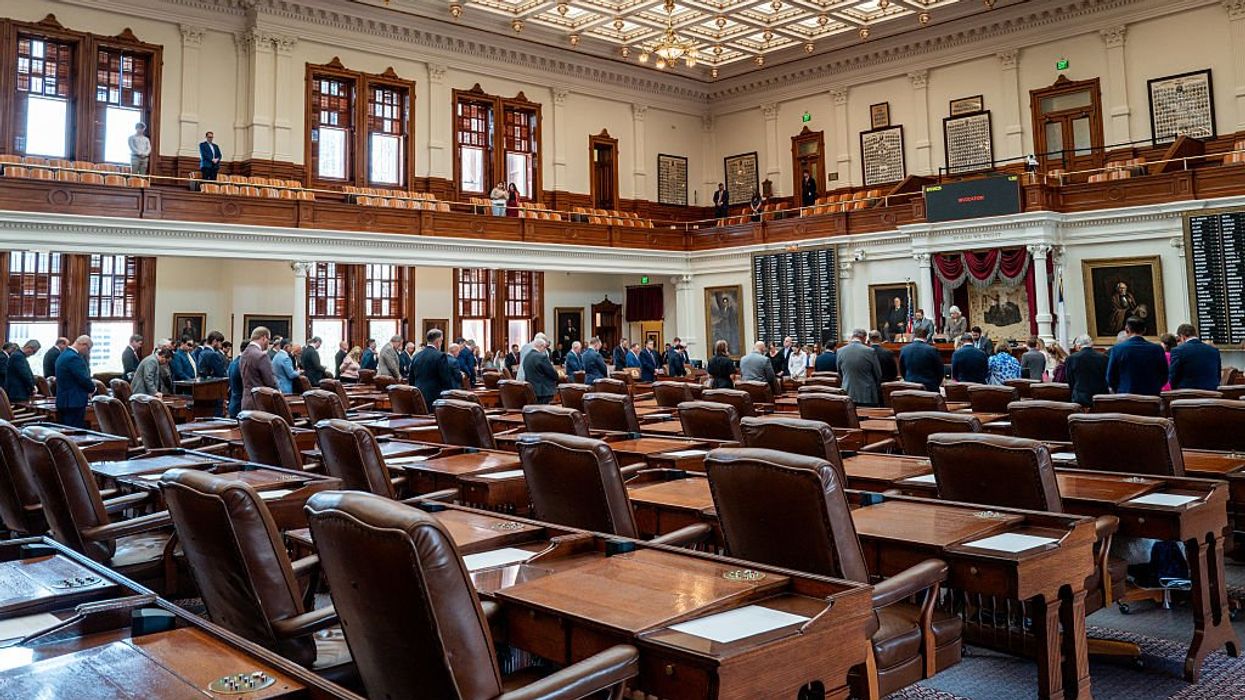Texas State Rep. James Talarico and more than 50 other Democratic Party legislators fled their state to break quorum and prevent Republicans from passing a gerrymandered map. He and other Democrats are risking arrest, fines, bomb threats, being hunted by the FBI, and even expulsion from their seats. Talarico recently addressed 3,000 Texans, where he reminded us that as a community, it takes “ganas,” or desire, to get things done.
He’s right that “ganas” are needed as the fight against redistricting in Texas continues. Republican gerrymandering threatens the upcoming midterm elections, and we must come together on the issues that will impact our Black and Brown communities.
“Trump is trying to rig the midterm elections right before our eyes. But first, he’ll have to come through us…It’s time to fight back,” Talarico recently said in a video posted on social media.
He added, “They’re turning our districts into crazy shapes to guarantee the outcome they want in the 2026 elections. If this power grab succeeds, they will hang on to power without any accountability from the voters. But Texas Democrats are fighting back.”
Redistricting in Texas will further silence the Latino and Black working class, disenfranchising young, low-income, minority voters more than others. The consequences of creating five new seats for Republicans in Texas would create one-sided power and hurt Texas and the country.
Talarico is right that when we come together as a community and unite in one purpose, change can happen and it has happened. Some of the most historic moments in the U.S. have come from our unity in our community and culture and being loyal to our people and not to the politicians trying to tear us apart.
One of the most significant changes has been the Civil Rights Movement, fueled by protests like the Montgomery Bus Boycott and the March on Washington. This led to the passage of the Civil Rights Act of 1964 and the Voting Rights Act of 1965.
Sadly, 60 years later, voting rights are under attack. Supreme Court rulings have given states unfettered power in redistricting.
We need more lawmakers across the country to stand up to Trump’s attempt to rig the midterms and fix elections. Texas is following the example of Minnesota.
In January of this year, 66 Minnesota Democrats walked off the floor on the first day of their legislative session. They managed to block Republicans from electing a speaker and conducting business for three weeks, during which the Minnesota Supreme Court officially set the standard for a quorum at 68 members—bringing lawmakers to the negotiating table. Democrats returned to the floor after the two parties reached a power-sharing agreement in February.
While not all walk-outs have a guaranteed outcome, there is power in unity. And now is the time for lawmakers and voters to stand up for democracy.
Already, governors in California, Illinois, and New York are considering changing their maps if Texas succeeds. Other red states may join Texas, including Indiana, Florida, and Missouri.
“If you will not stand down, I will be forced to lead an effort to redraw the maps in California to offset the rigging of maps in red states,” California Gov. Gavin Newsom said in a letter to Trump. “But if the other states call off their redistricting efforts, we will happily do the same. And American democracy will be better for it.”
What creates a united front? Fostering meaningful connections, shared experiences, and a sense of belonging. We, the community, create the difference and the changes needed to move our country in a better direction.
We need a Talarico mentality. He is a progressive Christian Democrat, a pastor, and a former teacher whose classrooms were composed of low-income, Mexican-American students on the west side of San Antonio. He is now being dubbed a “rising star” in the Democratic Party, and it was even suggested that he run for president by conservative podcast host Joe Rogan. There are rumors that Talarico may run for the U.S. Senate.
He is proof that we must have a politics based on empathy, courage, and “ganas.”
Connie Leon is a Houston educator, founder, and Latina advocate at the Houston Latina Collaborative and a Public Voices Fellow of The OpEd Project, the National Latina Institute for Reproductive Justice, and the Every Page Foundation.




















